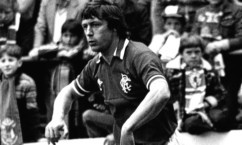
Whether you’ve been at a match or watched one on TV recently, you’ll have seen throw-ins being contested.
Opposing players argue with each other and match officials, while those inhabiting the technical areas jump up and down, vehemently claiming ‘Our ball’ every time it goes out of play.
Yet how often do you see teams take proper advantage once they get the ball in their hands?
Seldom, if ever. More often than not, a throw-in is taken so sloppily, it ends up putting pressure on the team given possession in the first place by carelessly losing the ball.
It’s becoming more and more of a liability to be given the award in the first place!
Exactly the opposite should be the case.
Pundits often predict that a closely-anticipated game will be decided from a dead-ball situation. What’s a throw-in if it isn’t that?
The vast majority of teams spend lots of training time attempting to come up with original moves from corners and free-kicks to wrong-foot the opposition.
So why not practice throw-ins too?
Years ago, when we called them shies, teams did. When Dundee won their one and only title over 50 years ago, they had a well-worked drill to take full advantage of a shy.
Bobby Seith, still the only player to win a Championship medal in England first with Burnley then Scotland, was the architect.
He once explained to me the secret code the Dundee players had worked out.
Simple things, like if he picked the ball up with both hands, it was going down the line to the winger.
If he bounced the ball first, two players crossed over but it was still going down the line.
If he picked the ball up with his left hand, it was going in-field, and so on.
Hardly rocket science, but at least it meant you nearly always kept possession, and occasionally scored, as a result of the throw.
Long throw-ins also appear to be on the wane. And don’t tell me you require muscles like a weight-lifter for those.
There was nothing of Willie Johnston when his pace caused defenders havoc. However, the Rangers winger also possessed a prodigious throw-in, often propelling the ball as far as the penalty spot.
The same was the case with Hibs’ Erich Schaedler and there were plenty others.
Their long throw prowess was achieved through practice and a natural ability.
It could reap havoc in the opposition box.
So the message is clear. If a throw-in is worth fighting over, it’s surely worth putting to good use.

Enjoy the convenience of having The Sunday Post delivered as a digital ePaper straight to your smartphone, tablet or computer.
Subscribe for only £5.49 a month and enjoy all the benefits of the printed paper as a digital replica.
Subscribe